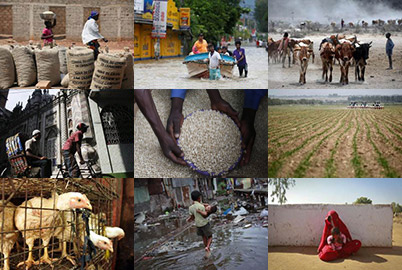NEW DELHI (AlertNet) Â? Thousands of flood-displaced people in IndiaÂ?s Himalayan region will have to spend the harsh winter season without homes, mainly due to a scarcity of labour and difficulties in getting construction supplies to the remote area, aid workers say.
Heavy monsoon rains last month triggered flash flooding and landslides which killed around 200 people -- demolishing hundreds of houses, blocking roads and destroying bridges Â? in Leh town, a popular tourist spot in Jammu and Kashmir state.
Aid workers estimate up to 25,000 people in Leh and over 30 surrounding villages have been by affected the monsoonal deluge and thousands have sought refuge in relief camps.
But as the winter approaches next month, aid workers say there is still no consensus amongst local authorities and charities on how to support those affected by the floods through the winter season, where temperatures can drop to -30 degrees Celsius.
"To construct the number of houses that is required -- given the lack of time to do it, the problems in accessing local construction materials and the challenging conditions of the terrain -- would be very difficult," said Vikas Gora of Sphere India, an emergency coordination group of U.N., government and aid agencies.
"The idea is to build proper permanent housing which would fit the local needs but would be more resilient and multi-hazard proof but those aims would be compromised if we were to start now."
TROUBLESOME TERRAIN
Leh, situated in the remote mountainous region of Ladakh, is a popular tourist destination due to its old Buddhist monasteries and adventure sports like white water rafting.
The town -- which is also at high risk from earthquakes -- is only accessible through two main roads, both of which are annually closed down by authorities over the winter period until January due to the threat of avalanches caused by heavy snowfall.
Aid workers said they would not be able to source all their construction materials locally and that the closure of the two main highways will meant supplies from outside will not be able to reach Leh.
Labour is also scarce, as most labourers are migrants from states like Bihar, who return home during the winter. Those labourers who are available will charge exorbitant prices to work in the freezing temperatures.
Some small roads into surrounding hamlets, add humanitarians, are also still blocked by boulders and mud sludge up to 15 feet high (4 metres) which were deposited by the landslides.
Bureaucratic hurdles where local authorities are still deliberating over a standard design for all newly constructed houses and compensation to rebuild or repair homes has yet to reach the displaced has also led to the decision to postpone construction.
WINTER-PROOFING
Some aid workers said at a most basic level, Â?winter-proofingÂ? people may be one solution until spring.
"I think providing winter tents which are of a better material, giving out blankets and warm clothing such as sweaters will be one option,Â? said John Roche, head of the India delegation of the International Federation of Red Cross and Red Crescent Societies (IFRC).
"The government is also looking at identifying public buildings like schools which they can use to shelter people over the winter period.Â?
Other aid workers added that the government could rent out the numerous rooms available in hundreds of guesthouses in the town, which are vacant over the winter period, and provide them to the displaced.
While other relief groups are advocating for temporary pre-fabricated structures made from concrete, cement and steel to be built.
But while many agreed building whole permanent houses is impossible, some charities say a step towards that would be less costly and more suited to the cultural needs of the community.
Â?We think building some form of permanent housing -- suited to the needs of the indigenous people -- would be the best solution and could still be possible,Â? said Anshu Sharma of SEEDS India, humanitarian organisation which specialises in post-disaster housing.
Â?Even if we build just one room with proper insulating materials such as mud and stone, which is used locally, people could expand on that when spring comes.Â?
Our Standards: The Thomson Reuters Trust Principles.

